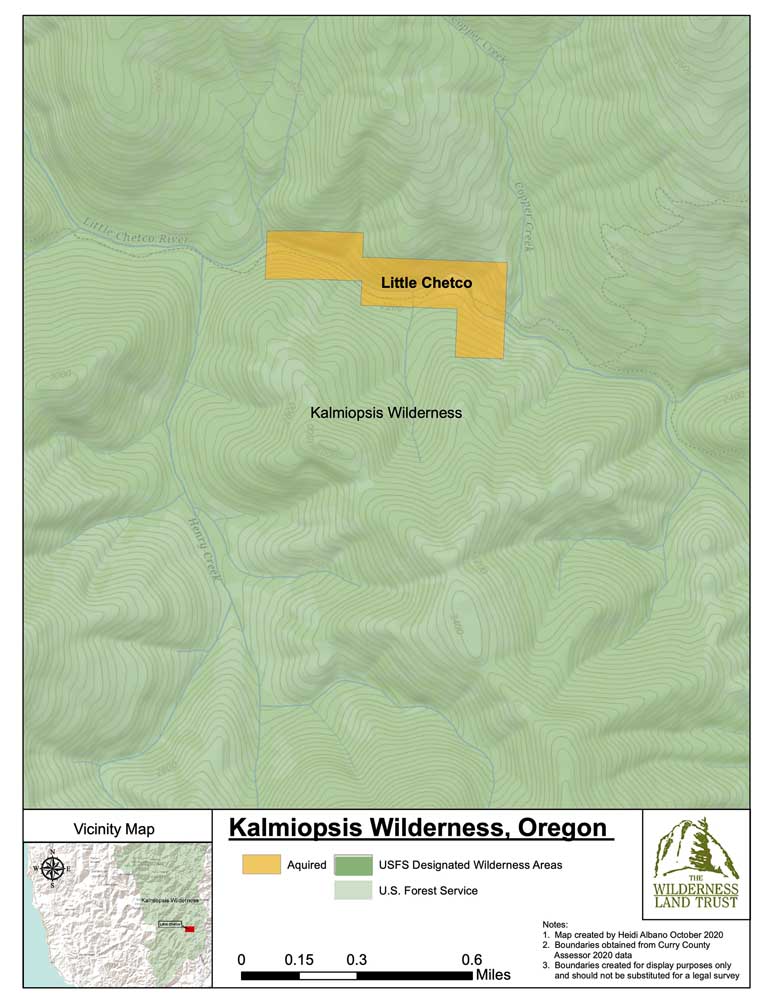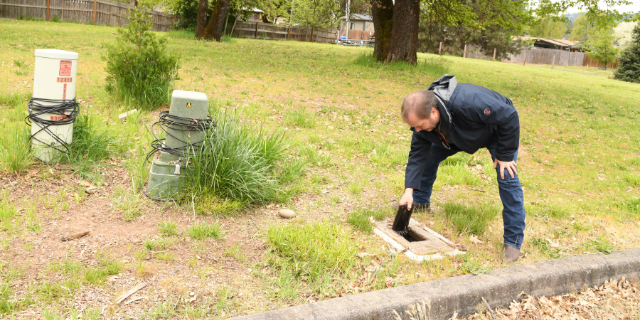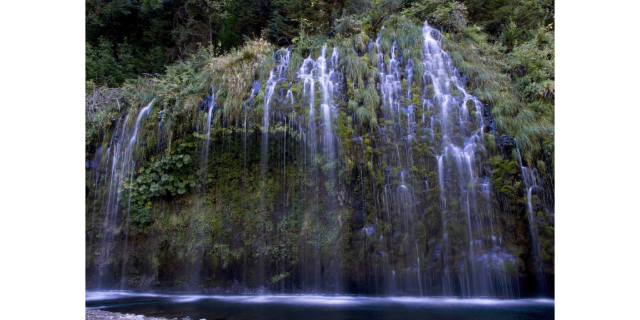Entire Kalmiopsis Wilderness now in public ownership
Published 12:00 pm Tuesday, June 27, 2023

- This Wilderness Land Trust graphic shows the location of a 60-acre former mining property that was purchased by the trust five years ago and sold last month to the U.S. government, to be part of the Kalmiopsis Wilderness. The parcel was the last remaining private property within the wilderness area.
The Kalmiopsis Wilderness is finally entirely in public hands.
Up until last month, there remained one 60-acre property still in private hands, deep within the wilderness area. No more.
Mined for more than a century, and located in the headwaters of the Chetco River, the “inholding” was obtained in 2018 by the Wilderness Land Trust, in anticipation of it one day being in public hands. That day happened May 15. And officials with local environmental organizations are happy.
“I’m just thrilled for the Chetco watershed and the fisheries that depend on it,” said George Sexton of the Klamath-Siskiyou Wildlands Center in Ashland. “The inholding is wilderness, and the watershed is protected.”
“The Chetco’s a fisherman’s paradise.”
The river’s headwaters are within the wilderness area.
“You feel like you’re going back in time,” Sexton said. “Pristine water, chock full of fish.”
A trail traverses the property, which Sexton has visited in years past.
“You’re out there when you’re out there,” he said. “It’s rugged and remote. … It’s a heck of a hike. It’s not a one-dayer.”
Gabe Howe of the Siskiyou Mountain Club of Ashland has been there, too. His organization builds and maintains trails in the region, including inside the wilderness area. He remembers traveling to the property years ago to document what was happening as the location was mined and developed with cabins. He didn’t like what he saw.
“I don’t know where to start,” Howe said. “I was appalled.”
He notified Curry County and state Department of Environmental Quality authorities, in an effort to investigate what he considered to be questionable practices.
“I was so frustrated,” he said.
All that ended in 2018, when the trust bought the land with the idea of protecting it as wilderness by eventually transferring it to government ownership.
“I cracked a bottle of whiskey,” Howe said, recalling the day. “I was very pleased.”
The trust, headquartered in Helena, Montana, bought the property for $300,000 and sold it for $90,000, according to Virginia Gibbons of the U.S. Forest Service, who declined further comment. The property’s former owner, David Ratan, a financial adviser in Washington state, also declined to comment.
The trust announced the sale in a news release. Up until 2018, according to the announcement, the property was being used for dredge mining, which sucks up gravel from the riverbed, in an attempt to find gold.
“The impact of this kind of development reaches beyond property lines though, with sediment washing downstream in coho salmon spawning grounds, and wildlife pushed out of historic migration routes,” according to the announcement, which was sent by trust spokeswoman Margosia Jadkowski.
The trust has worked to help complete 17 wilderness areas, according to the statement: “Each project we work on carries the story of a place that has inspired countless people and communities, a family that has chosen to give up what is theirs to protect its future, and a vibrant, and often breathtaking, landscape supporting rich biodiversity.”
Once mined for gold, 60-acre ‘inholding’ now is wilderness
The last piece of private property within the Kalmiopsis Wilderness west of Cave Junction has been obtained by the U.S. government. Here’s a bit about the property’s history, according to the Wilderness Land Trust and media articles:
1800s: Mining begins on the 60-acre property, located along the Little Chetco River about 10 miles west of Cave Junction, near a location known as Emily Camp. Claims to the property change hands several times over the years.
1964: Congressional passage of the Wilderness Act establishes the Kalmiopsis Wilderness, at 179,755 acres.
1982: Carl Alleman of Selma pays $23,000 to purchase mining claims on the property, according to the Grants Pass Daily Courier.
1988: Alleman’s claims are patented and he is given title to the property for $150. U.S. mining law allows such transfers if certain conditions are met, including a determination that mining would be profitable.
1998: The U.S. Forest Service grants Alleman motorized access to his property eight times a year. The trip is about 12 miles on primitive roads through a locked gate near Onion Camp and Babyfoot Lake.
2002: The property burns in the Biscuit Fire.
2004: Friends of the Kalmiopsis and Wilderness Watch win a lawsuit overturning the USFS decision to allow motorized access, saying the agency didn’t adequately assess damages to the wilderness.
2007: David Rutan, now a financial adviser in Washington state, buys the property from Alleman for $500,000, erects cabins and begins operating Oregon Gold Trips. He brings in visitors by helicopter, charging them $1,450 for a chance to try their hand at gold mining, according to the Courier.
2017: The Chetco Bar Fire burns the buildings on the property.
2018: The Wilderness Land Trust pays $300,000 to buy the property from Rutan, who removes debris and remaining heavy equipment by helicopter.
May 15, 2023: The trust sells the property to the government, under the care of the Forest Service, for $89,700.






